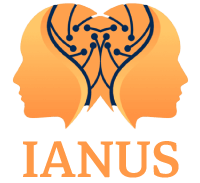IANUS partner Karlsruhe Institute of Technology (KIT) announced the proposal for its case study, which focuses on the discourse surrounding nanotechnology. This case study aims to delve into the intricate dialogue that has evolved around nanotechnology.
Nanotechnology, a field that emerged at the close of the last century, occupies a unique position in the scientific and technological landscape. Its perception varies widely: while some view it as a subject of historical interest, others consider it a contemporary issue or even a future prospect, especially when linked to more visionary or futuristic technology concepts.
Despite the high expectations for public controversy around the year 2000, the anticipated widespread debate over nanotechnology has yet to fully materialize and has significantly dwindled in recent years. This shift was influenced by various stakeholders, including futurists like transhumanists and science policy actors in the United States, who aimed to steer the conversation proactively to prevent the kind of public relations issues encountered with genetically modified organisms. Criticism of nanotechnology, particularly of its more visionary aspirations, emerged swiftly, sparking debates that have since continued, albeit within more confined circles. This transition to what could be termed the “normalization” of nanotechnology discourse reflects the influence of science policy, industry, and other external actors who sought to ground discussions in more realistic and less speculative frameworks.
The case study will also explore the dynamics of risk assessment within the nanotechnology field, addressing how ethical considerations and public discussions were shaped not only by the technology itself but by the broader societal implications envisioned by its early proponents. This includes responses from non-scientific stakeholders to the futuristic scenarios painted by nanotechnology’s champions, as well as the interdisciplinary disagreements that arose but were rarely brought to the public’s attention. Through this case study, KIT aims to comprehensively analyze the nanotechnology discourse, offering insights into the complexities of scientific communication, public perception, and the interplay between visionary science and societal expectations. Stay tuned for more updates on this fascinating exploration into the world of nanotechnology.
